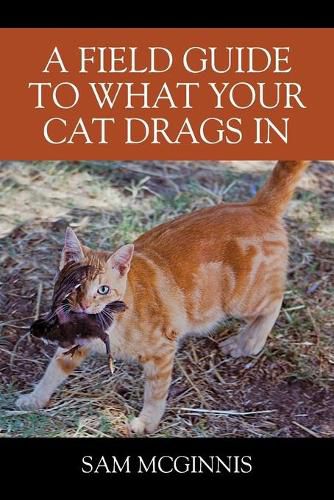Readings Newsletter
Become a Readings Member to make your shopping experience even easier.
Sign in or sign up for free!
You’re not far away from qualifying for FREE standard shipping within Australia
You’ve qualified for FREE standard shipping within Australia
The cart is loading…






This title is printed to order. This book may have been self-published. If so, we cannot guarantee the quality of the content. In the main most books will have gone through the editing process however some may not. We therefore suggest that you be aware of this before ordering this book. If in doubt check either the author or publisher’s details as we are unable to accept any returns unless they are faulty. Please contact us if you have any questions.
This book presents in field guide style how to identify the spectrum of small vertebrate prey that your cat(s) bring into your home, the reasons for this behavior, and if captive prey is badly injured, how best to euthanize it and dispose of the remains. It also traces the relatively recent introduction of the European House Cat in the Western Hemisphere and why it is now our most successful predator on small vertebrate species. Prey identification is at the vertebrate family level and uses common terminology to do so. The author compares his experiences on zoological collecting trips to that of cat owners who are periodically presented with samples of the small wildlife species that inhabit their greater property area and how to determine the ecological status of the land their presence reflects.
$9.00 standard shipping within Australia
FREE standard shipping within Australia for orders over $100.00
Express & International shipping calculated at checkout
This title is printed to order. This book may have been self-published. If so, we cannot guarantee the quality of the content. In the main most books will have gone through the editing process however some may not. We therefore suggest that you be aware of this before ordering this book. If in doubt check either the author or publisher’s details as we are unable to accept any returns unless they are faulty. Please contact us if you have any questions.
This book presents in field guide style how to identify the spectrum of small vertebrate prey that your cat(s) bring into your home, the reasons for this behavior, and if captive prey is badly injured, how best to euthanize it and dispose of the remains. It also traces the relatively recent introduction of the European House Cat in the Western Hemisphere and why it is now our most successful predator on small vertebrate species. Prey identification is at the vertebrate family level and uses common terminology to do so. The author compares his experiences on zoological collecting trips to that of cat owners who are periodically presented with samples of the small wildlife species that inhabit their greater property area and how to determine the ecological status of the land their presence reflects.